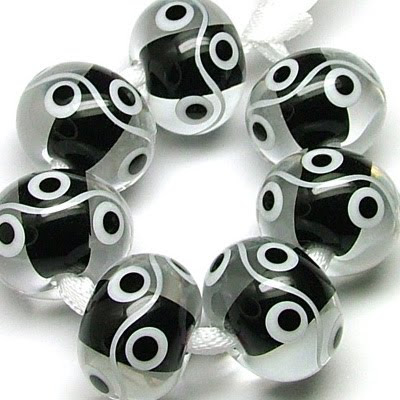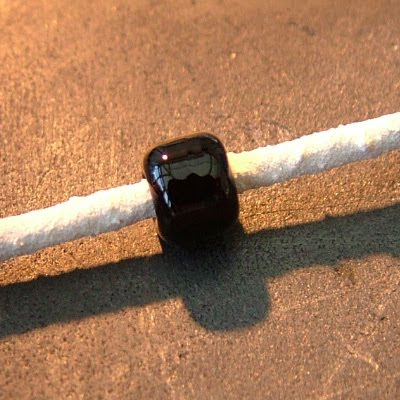 Sometimes I forget how totally bizarre my job must appear to other people. I started this lampworking malarkey five and a half years ago and back then I had no idea that you could have fun melting glass in the comfort of your own home. Or shed. Now it's my job and I'm so used to it I forget that other non-glassy people probably don't know what lampwork is, just like I once didn't.
Sometimes I forget how totally bizarre my job must appear to other people. I started this lampworking malarkey five and a half years ago and back then I had no idea that you could have fun melting glass in the comfort of your own home. Or shed. Now it's my job and I'm so used to it I forget that other non-glassy people probably don't know what lampwork is, just like I once didn't.When I meet new people and they ask me what I do, I tell them that I'm a beadmaker. They usually nod politely and tell me that their sister, neighbour or friend-of-a-friend makes jewellery too. Then I have to explain that no, I don't make jewellery - I actually make the individual glass beads. Then I normally do a whole What's-My-Line? type mime and a quick explanation to back it up. I've got quite good at it - I can describe my occupation in just one sentence now!
I mention this because today the double glazing people came to fit new windows and a new front door. I let them in, made them cups of tea and then I settled down to melt glass in the conservatory while they went about their windowy business. Every now and then I'd catch sight of one of the window men lurking in the lounge trying to figure out what the heck I was up to with a flame and some glass rods whilst wearing some attractive purple glasses. Eventually I beckoned them in and explained what I was doing and they were fascinated. I love how people react to seeing what I do - it's a kind of a cross between wonder, puzzlement and a so-that's-how-beads-are-made reaction. I guess it's pretty much the same reaction I had when I first read my Cindy Jenkins' 'Making Glass Beads' book all those years ago .....














